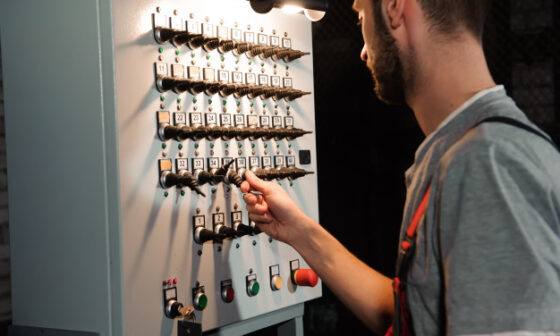Multimeters are an essential device for any electrician and offer the useful function of being able to test many different measurements with one piece of equipment. A multimeter measures voltage, current, resistance, continuity and more according to the model. They are used to prevent dangerous accidents when dealing with electricity, however, the testing regime with a multimeter presents its own dangers.
So how do you ensure that you are using your multimeter safely and not putting yourself in danger of electrocution?
Get the right Multimeter
Multimeters come in a range of models, each with its own specific features. Multimeters need to be matched to the job for safe operation. Choose the device, including test probes, for voltage level and category rating. The device must not be rated less than the electrical equipment being tested otherwise electrical explosion resulting from a connection from air to ground or arc flash, may occur. Arc flashes can reach temperatures of up to 19,0000C. Another danger of using the incorrect category is voltage spikes which are high energy fast bursts that can reach high voltages and cause a lot of damage.
Read the manual
Understanding the individuality of the machine and following the specific instructions for each multimeter and each function will help the safe operation of the device. As well as giving clear instructions for use of the device, the manual will also give the steps to check internal breaks and other safety procedures.
Choose the right setting
For each function of the multimeter, specific instructions need to be followed. Applying the incorrect procedure presents a major hazard to the operator.
Common errors include:
- Selecting ohms when measuring voltage which could see your meter exploding
- Not changing the probe socket when switching from measuring current to voltage could cause the meter to short. This is when an electrical circuit becomes a current flowing along a path with no resistance or impedance and can cause fatal electric shocks.
Check for defects
The meter and probes should be checked for defects before use. This includes checking the case for signs of cracking and that the visual display is easy to read. Probes should be unplugged and checked for frayed wiring. Make sure there are no cracks or gaps between the insulated wire and the probes at both ends.
Avoid Complacency
The biggest danger in using a multimeter is complacency. Each time you use the device, you need to go through each safety step, and make sure you are following the steps required. This means making sure you have the correct meter and probes for the job, have the multimeter on the correct setting and your insulation and safety equipment is all in top condition.
Getting the most value out of your multi-meter is dependent on following all instructions exactly and understanding the dangers inherent in misuse. In the hands of an experienced and careful electrician, the multimeter is an efficient and useful work tool that saves having to carry multiple measuring devices in your tool bag.







